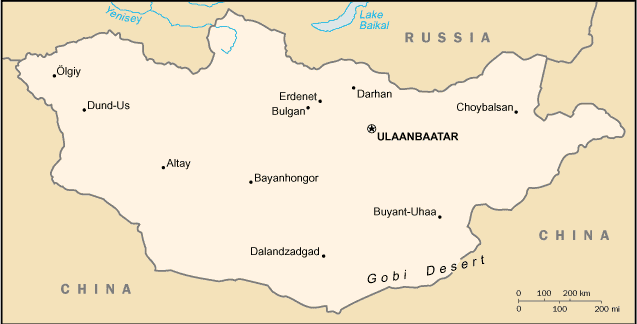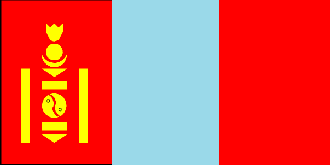
|
Mongolia
Background:
The Mongols entered history in the 13th century under Genghis Khan. After his
death the empire was divided into
several powerful Mongol states, but these broke apart in the 14th century. The
Mongols eventually retired to their original steppe homelands and came under
Chinese rule. Mongolia won its independence in 1921 with Soviet backing.
During the early 1990s, the
ex-Communist Mongolian People's Revolutionary Party (MPRP) gradually yielded
its monopoly on power to the Democratic Union Coalition (DUC), which defeated
the MPRP in a national election in 1996. Over the next four years the DUC put
forward a number of key reforms to modernize the economy and democratize the
political system.
|

Climate and Terrain:
Climate: Desert; continental (large daily and seasonal temperature ranges).
Terrain: Vast semi desert and desert plains, grassy steppe, mountains in west
and southwest; Gobi Desert in south-central.
|
|
|
Economy overview:
Economic activity traditionally has been based on agriculture and breeding of
livestock. Mongolia also has extensive mineral deposits: copper, coal,
molybdenum, tin, tungsten, and gold account for a large part of industrial
production.
Mongolia was driven into deep recession, prolonged by the Mongolian People's
Revolutionary Party's (MPRP) reluctance to undertake serious economic reform.
|
|